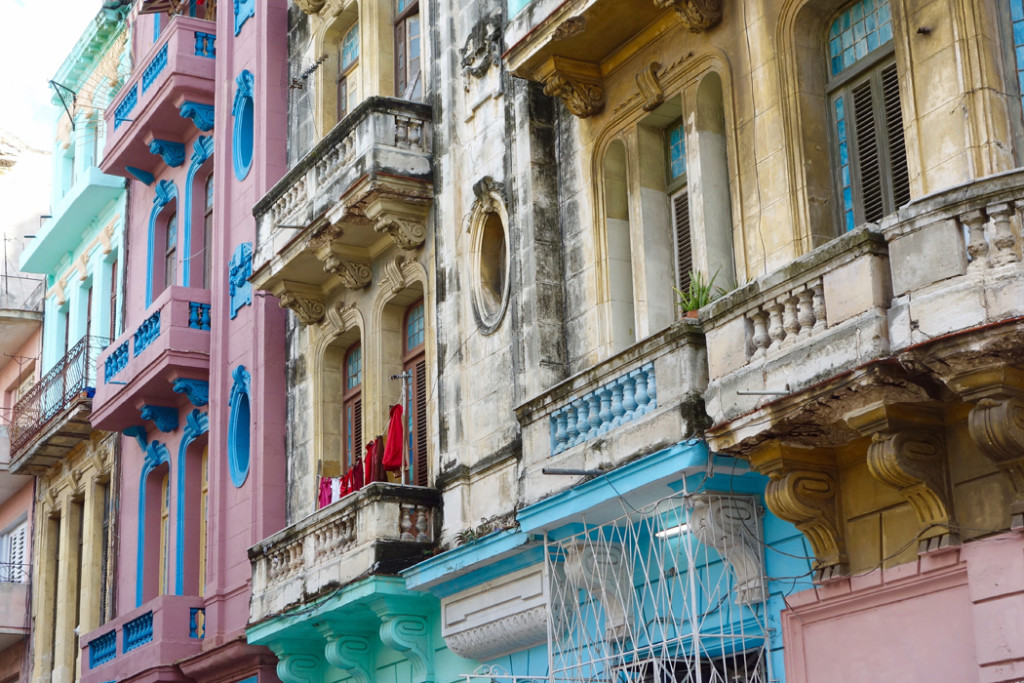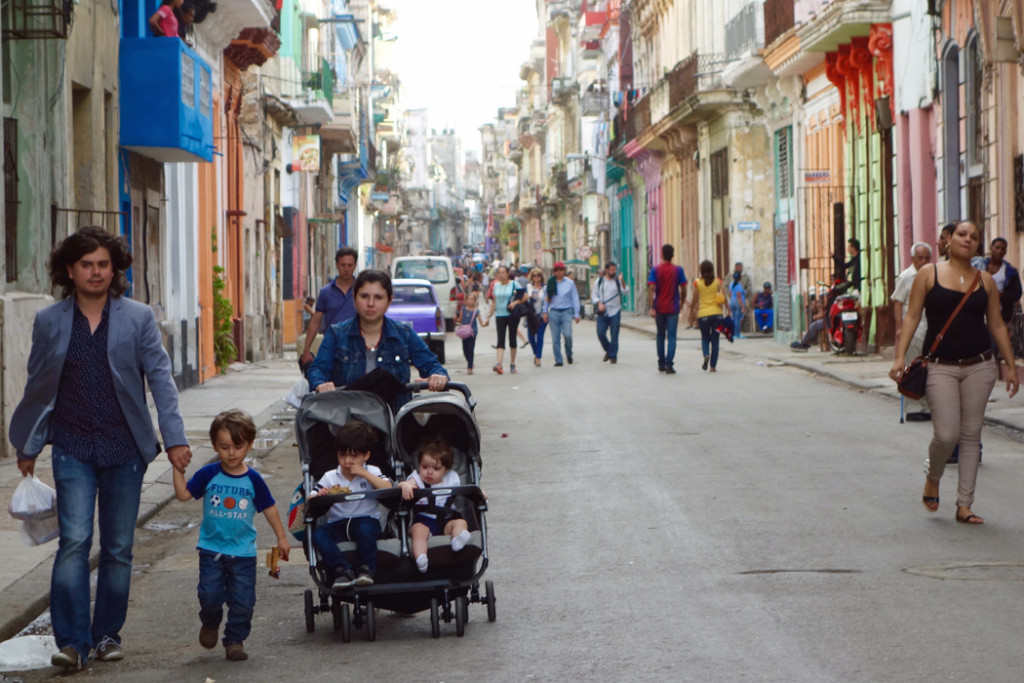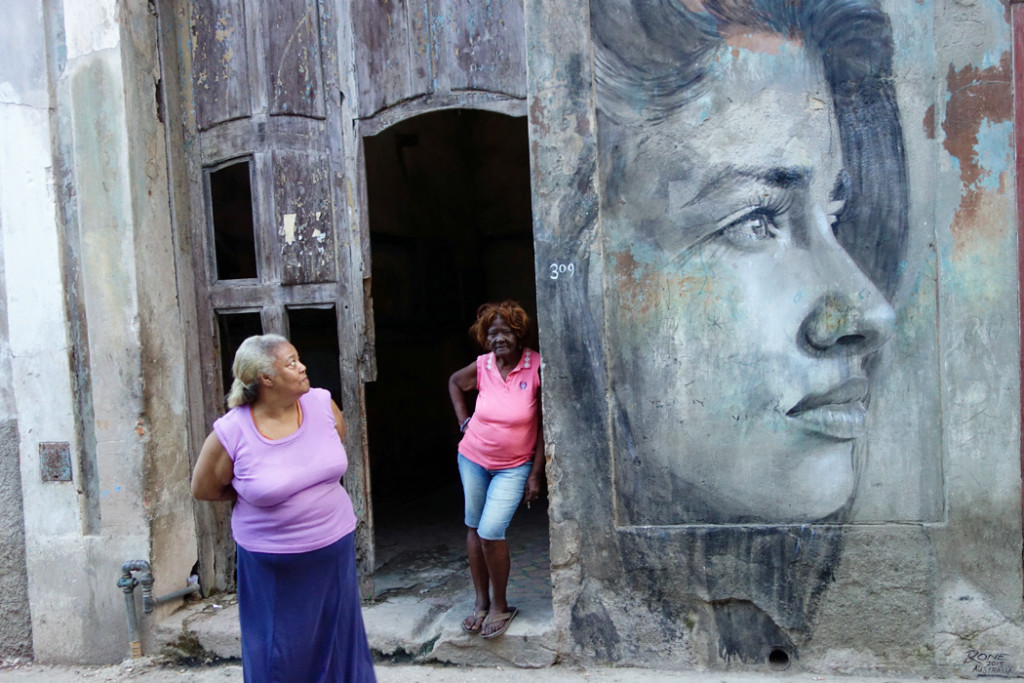As Internet access comes to Cuba, busy squares in Havana are crowded with people hungry to connect online. These are the big-city young generation waiting patiently for their society to break open. When it does…look out!
Getting Online in Cuba
Traveling through Cuba, you often feel as if you’re hanging out with people still living in the 20th century. But there’s clearly a huge appetite for the Internet. People — young and old, poor and less poor — go to great lengths to get online. The capacity is meager, and surfing freely can be a challenge — but, clearly, the hunger for the Internet will not be stymied. At night, many public zones with Wi-Fi become community living rooms. As few can afford to be online at home, certain corners — where Wi-Fi is available — glow with the screens of smartphones. Government control of Internet access seems not very determined…except for the websites of anti-Castro forces in Florida.
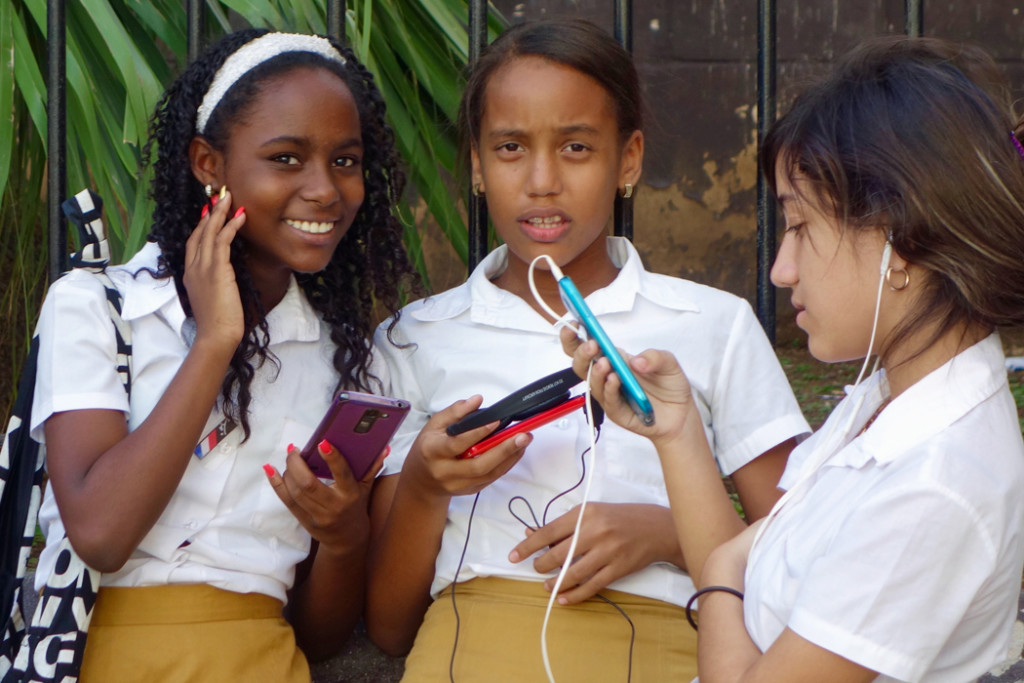



Cuba’s Complex Ethnic Mix
One of the joys of visiting Cuba is meeting the people in this still remarkably closed society. It’s so easy and fun to connect with people on the streets who are curious about the USA and love to talk. I found Cubans joyful, relaxed, and smart — yet isolated and wired differently, as mainstays of our modern outlook (like the Internet and the opportunity to work hard to prosper) are still novel to most people here. I encountered two kinds of people: Rank-and-file Cubans, and those with relatives in America or with jobs in tourism (which means they have more money, a broader perspective, and more opportunities).
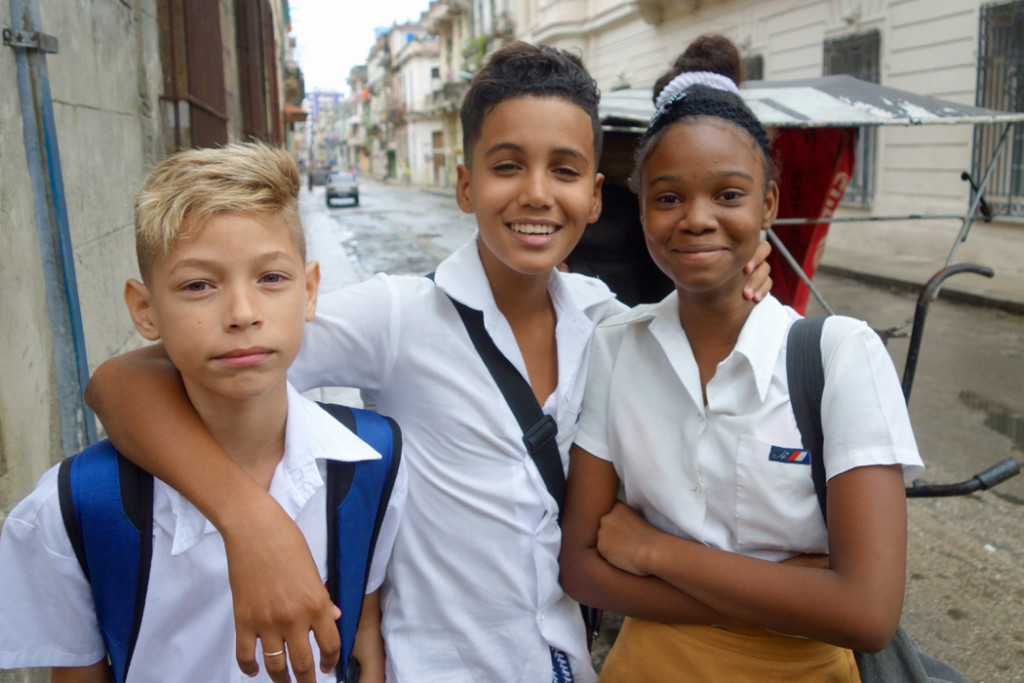
These students reminded me that Cuba still categorizes its citizens into three ethnic groups: N (for negro, or black), M (for mestizo, or mixed), and B (for blanco, or white — generally meaning Hispanic, of Spanish decent). It’s like American drivers licenses stipulating what color our eyes are.
Discrimination by race is officially illegal in Cuba. But a complex history has created social stratification. The white Cubans were predominantly the ones who supported Batista. Conversely, it was the black Cubans who felt most oppressed by Batista and American interests, and supported the Revolution most wholeheartedly.
After the Revolution, an estimated 86 percent of the Cubans who fled to the USA describe themselves as white (out of a general Cuban population that’s only about 30 percent Hispanic). That’s why, of the people in Cuba who receive foreign remittances (and are therefore local economic elites today), the vast majority are the white Cubans who chose not to leave the country. Hispanic Cubans have the most power and contact with the outside world. The result: In today’s Cuba, light-skinned people tend to be privileged and dark-skinned people are generally disadvantaged.
Friendly Cuban Welcomes
Locals kept telling me, “We live in an open society. Wherever there’s an open door, you are welcome to enter.” And I found that to be the case. Some of my favorite hours in Havana were spent simply strolling down the streets, venturing into back lanes, and popping into courtyards, shops, schools, and bakeries…anything that was open.

Photo: The Travelphile


Photo: The Travelphile
Cuba is very proud of its schools. They looked extremely ramshackle compared to American schools. But, unlike in neighboring countries, Cuban children are encouraged to get a solid education (it’s compulsory from ages 6 to 16, and free all the way through a Ph.D.). Families are not impoverished by having to pay for tuition, uniforms, and books. Exploring the city, you find many grade schools tucked into big building blocks in the urban core. They all seemed to be named for Revolutionary heroes, with a bust and memorial to each at the entrance. And the children — with their bright-red kerchiefs — seemed both enthusiastic about learning and excited to meet foreign travelers who drop in.

Photo: The Travelphile
Even at midnight, if we happened into a grade school, the guards would jump at the opportunity to invite us in and show us around.
Photo Essay: Old Town Scenes
Beyond the cute tourist zone of Old Havana (Havana Vieja), the rest of the city provides a jarring contrast. The cityscape is three layers of architecture: a melting-sugar-cube world of delightful Art Deco, brutal Soviet functionalism, and current no-frills construction — cinderblock painted in playhouse colors. Exploring it is easy. I found that, unless a door is locked, it’s all public.
Families live in street-level apartments, just steps away from major monuments. When roaming the streets of Havana, you’re treated to intimate peeks into domestic worlds. Tiny family rooms are filled with Grandma-vintage heirloom furniture, as three generations ignore a blaring TV. Just as the cars are in a 1950s time warp, so are the living rooms. It’s often the lighting that catches your eye: backlit, toned, and dark-skinned bodies shiny with sweat and wearing clothes that seem to fit the decrepit walls that corral all that Cuban conviviality.
As a photographer, it’s easy to romanticize poverty. But the daily reality of some of the people I met is miserable. For this reason, I found walking the streets both fun…and troubling.
